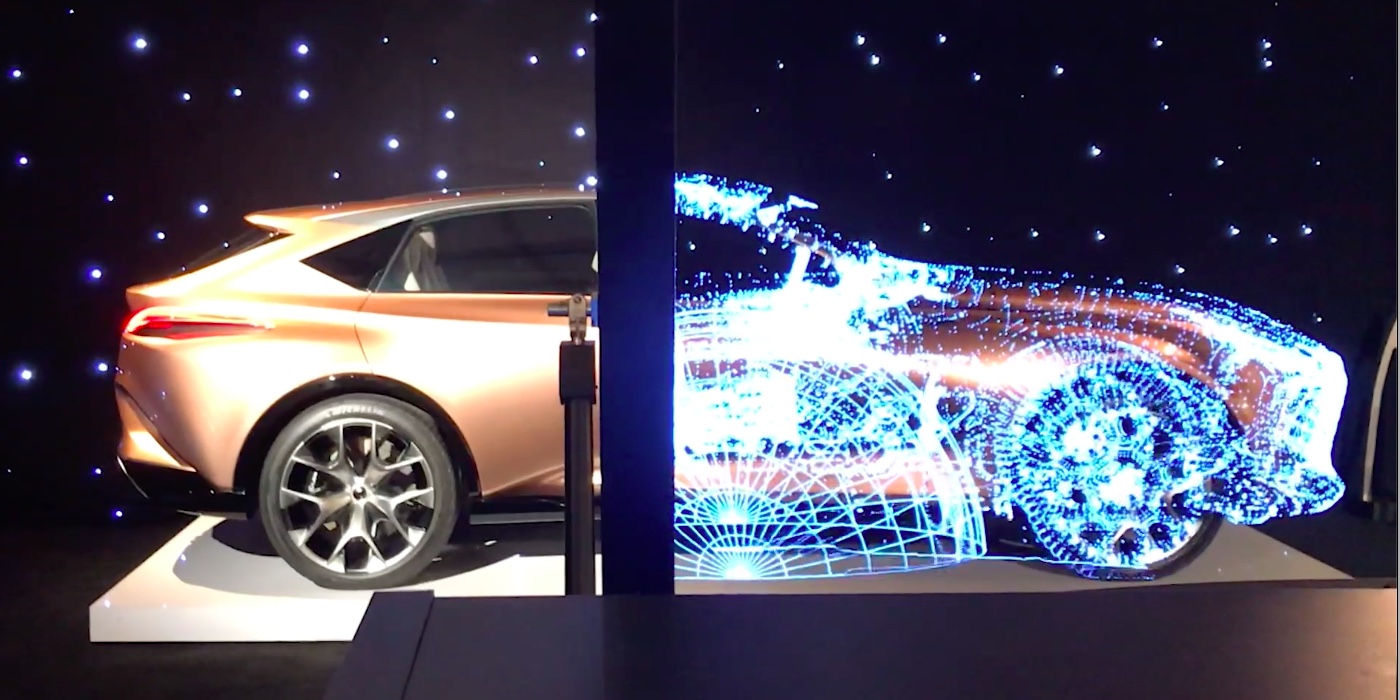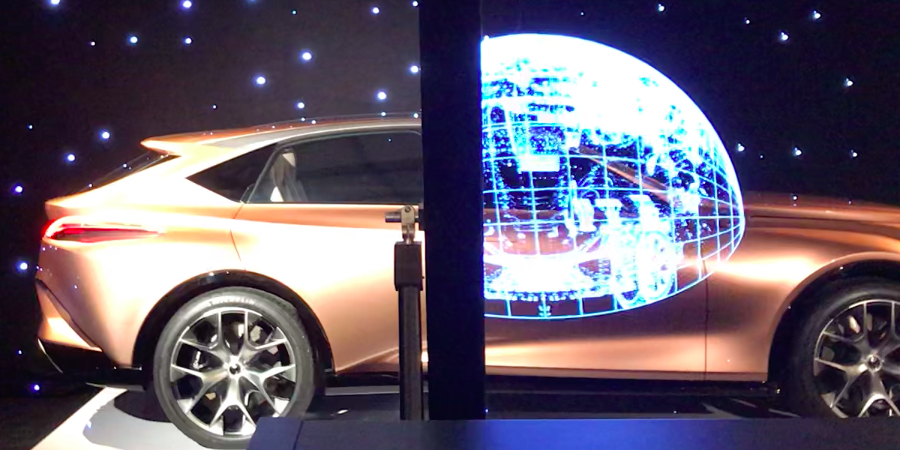It seems as if brands from every corner of the commercial universe now feel obliged to mount some kind of activation at Art Basel Miami Beach—we’ve gotten invites to events for everything from refrigerators to eye drops. But Lexus working with Design Miami makes perfect sense. The car company was the official automotive partner at this year’s fair, and it showed off the design bona fides of its LF-1 Limitless Future Concept Vehicle with a large exhibition. Titled The Future is Limitless, the Lexus presentation (a reprise of an exhibition that debuted in Milan during Salone del Mobile in April) featured two of the concept cars. In front of one of them, a transparent screen displayed a visualization by Japanese architect Socha Ichikawa that displayed an illustration of the car’s inner workings overlaid on the vehicle.
Just before the fair opened, Surface spoke with Brian Bolain, the general manager of Lexus International about the installation, the company’s creative culture, and why you can’t judge the design of a parked car.
Where does design sit in the overall structure of Lexus?
Well, Lexus is turning 30 years old next year. Probably in the first two-thirds of the brand’s life, we really focused on fairly traditional luxury values: the way the car felt and the materials we used and the quality we built in and the customer service we gave. And then, early in this decade, there was sort of a pivotal moment where our president, Akio Toyoda, a designer by trade, sort of decreed that there would be no more “boring” associated with a Lexus product.
Starting in around 2012, there was a very concerted effort to make Lexus more recognizable, so [you saw] the arrowhead treatment of our driving lights, the arrowhead treatment of our window profile, the shape of our grill, and the commonality of some character lines and taillights that gave the brand a distinct personality that was missing before.
And who leads the design side? Is there like a Jony Ive of Lexus?
It’s interesting the way design happens in the organization. There are actually three major design facilities around the world. There is one in Southern California; one in the south of France, in Nice; and one in Japan. All of those contribute to Lexus products, depending on the product and which of the design facilities draws that assignment, but it’s one of the ways that we try to have a global view.

